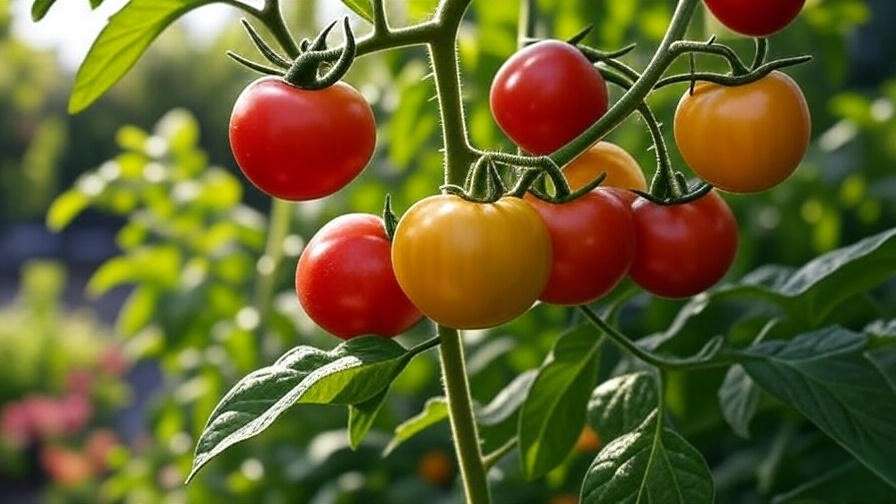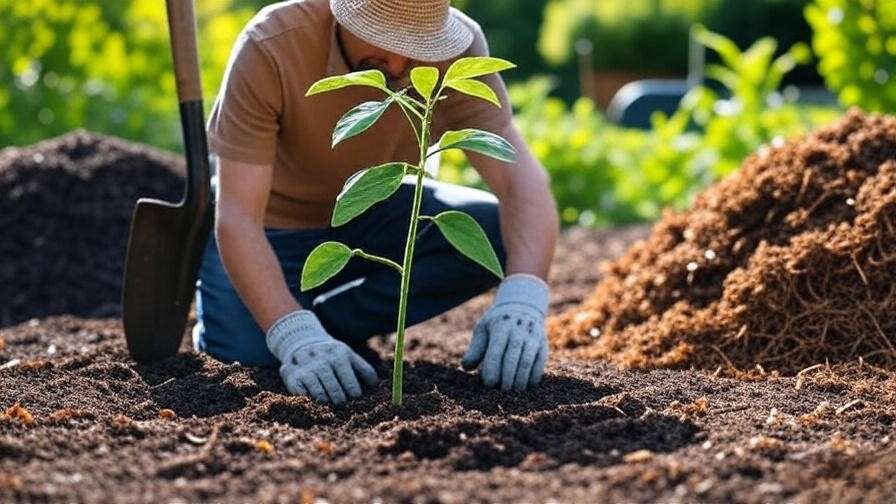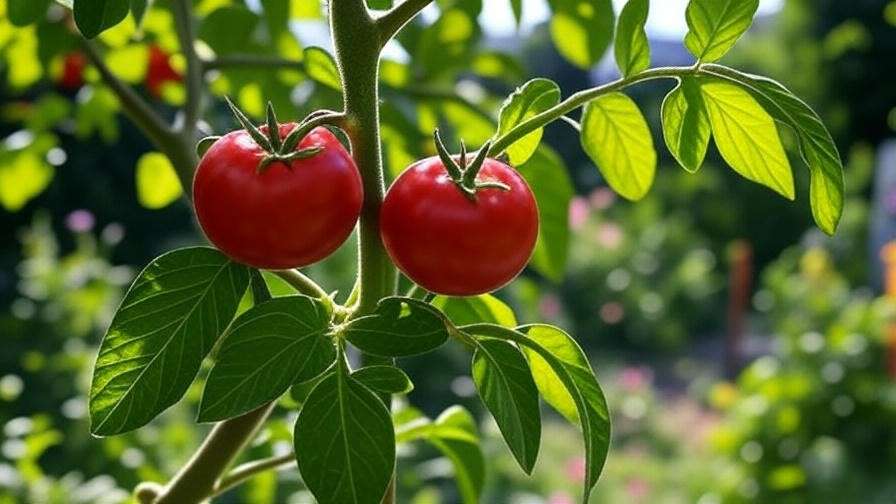Imagine plucking vibrant, tangy tree tomato fruit from your own backyard, ready to transform your salads, salsas, or smoothies into something extraordinary! 🌈 Also known as tamarillos, these egg-shaped gems are bursting with flavor and nutrients, making them a must-have for any home gardener. Whether you’re a seasoned plant enthusiast or a beginner eager to grow your own food, this comprehensive guide will walk you through everything you need to know to cultivate tree tomatoes successfully. From planting to harvesting, we’ll share expert tips, backed by years of horticultural experience, to ensure a bountiful harvest. Let’s dive into the world of tamarillos and unlock the secrets to thriving plants! 🌳✨
With their rising popularity in home gardens, tree tomatoes offer a unique blend of exotic appeal and manageable care. This article, crafted with insights from agricultural experts and reputable sources like university extensions, will address common challenges, provide actionable steps, and inspire you to grow these delicious fruits with confidence. Ready to get started? 🌱
What is a Tree Tomato? Understanding the Tamarillo 🍈
Origins and Characteristics 🌍
The tree tomato, scientifically known as Solanum betaceum, hails from the Andes of South America, where it thrives in subtropical climates. 🌎 Often called tamarillo, this fruit grows on small, evergreen trees or shrubs, reaching heights of 6–10 feet. Its egg-shaped fruits come in striking shades of red, yellow, or orange, with a juicy, tangy-sweet flesh that’s perfect for both savory and sweet dishes. 🍒 Each fruit is packed with tiny, edible seeds, similar to those of its cousin, the common tomato. Nutritionally, tamarillos are a powerhouse, rich in vitamins C and A, antioxidants, and fiber, making them a healthy addition to any diet. 🥗

Why Grow Tree Tomatoes? 🌟
Tree tomatoes are a fantastic choice for gardeners seeking something unique. Their exotic appearance and versatility in recipes—from salsas to desserts—make them a standout in any kitchen garden. 🍴 Unlike some fruit trees, tamarillos are relatively low-maintenance, producing fruit within 18 months of planting under the right conditions. They’re also adaptable, thriving in various climates, from subtropical regions to temperate areas with proper frost protection. 🌡️ Whether you have a sprawling backyard or a cozy balcony, tree tomatoes can fit into your gardening plans, offering both aesthetic appeal and delicious rewards. 🌱
Ideal Growing Conditions for Tree Tomato Fruit ☀️
Climate and Temperature Needs 🌡️
Tree tomatoes flourish in mild climates, with an ideal temperature range of 50–85°F (10–29°C). 🌞 They’re sensitive to frost, so in cooler regions, consider planting in spring to allow establishment before winter. If temperatures dip below 32°F (0°C), young plants may need protection, such as frost cloths or temporary covers. 🧣 For optimal growth, choose a well-drained, loamy soil with a pH between 5.5 and 7.5. Testing your soil beforehand ensures you can amend it with organic matter like compost to create the perfect environment. 🌍
Sunlight and Location 🌄
Full sun is non-negotiable for tree tomatoes—aim for at least 6–8 hours of direct sunlight daily. ☀️ Choose a location sheltered from strong winds, which can damage delicate branches. If space is limited, tree tomatoes adapt beautifully to container gardening, allowing you to move them indoors during cold snaps. 🪴 When selecting a spot, ensure good air circulation to prevent fungal issues, and avoid low-lying areas where water might pool. A sunny, sheltered corner of your garden or patio is ideal for these vibrant plants. 🌳
Step-by-Step Guide to Planting Tree Tomatoes 🌱
Choosing the Right Variety 🧬
Tamarillos come in several varieties, each with distinct flavors and colors. Red tamarillos are tart and bold, perfect for savory dishes, while yellow varieties lean sweeter, ideal for desserts. Orange tamarillos offer a balanced flavor. 🍅 Research which variety suits your climate and taste preferences. For example, ‘Red Oratia’ is a popular choice for its rich flavor, while ‘Goldmine’ is favored for sweeter fruits. Source seeds or saplings from reputable nurseries or online suppliers like Baker Creek Heirloom Seeds or local agricultural extensions to ensure quality. 🛒

Preparing the Soil 🕳️
Healthy soil is the foundation of a thriving tree tomato plant. Start with a soil test to check pH and nutrient levels—kits are available at garden centers or through local extensions. 🧪 Amend soil with organic compost or well-rotted manure to boost fertility and improve drainage. Avoid heavy clay soils, as they can lead to root rot. 💧 Mulching with straw or wood chips helps retain moisture and regulate soil temperature, creating a cozy home for your tamarillo roots. 🌾 Expert Tip: Add a layer of compost annually to maintain soil health. 🌱
Planting Process 🌳
The best time to plant tree tomatoes is in spring or early summer, when temperatures are consistently above 50°F (10°C). 🌸 Dig a hole twice as wide and deep as the root ball, spacing plants 6–10 feet apart to ensure air circulation and room for growth. 📏 Place the sapling in the hole, backfill with soil, and water thoroughly to settle the roots. 🚿 Stake young plants to provide support against wind. Keep the soil consistently moist but not waterlogged during the first few weeks to encourage strong root development. 🌿
Caring for Your Tree Tomato Plant 🌿
Watering and Irrigation 💦
Consistent moisture is key to healthy tamarillos, but overwatering can spell disaster. Aim for 1–2 inches of water per week, adjusting based on rainfall and climate. 🌧️ In hot, dry conditions, water deeply every few days to keep the soil evenly moist. A drip irrigation system is a game-changer, delivering water directly to the roots while minimizing waste. 💧 Check soil moisture by digging an inch down—if it feels dry, it’s time to water. Avoid letting the soil become soggy, as this can lead to root rot. 🚨

Fertilizing for Optimal Growth 🌱
Feed your tree tomato plants with a balanced fertilizer, such as a 10-10-10 NPK formula, or opt for organic alternatives like fish emulsion or compost tea. 🧑🌾 Apply fertilizer monthly during the growing season (spring through summer) to support vigorous growth and fruit production. 📅 Be cautious not to over-fertilize, as excess nitrogen can lead to lush foliage at the expense of fruit. Expert Tip: A handful of compost around the base every few months provides a slow-release nutrient boost. 🌿 Always follow package instructions to avoid leaf burn. ⚠️
Pruning and Training ✂️
Pruning keeps your tamarillo productive and manageable. In late winter or early spring, remove dead or damaged branches and thin out crowded areas to improve air circulation. 🌸 Aim for an open, bushy shape to maximize sunlight exposure and fruit production. Young trees benefit from training—use stakes or ties to guide the main stem for a strong structure. 💪 Regular pruning also prevents the tree from becoming leggy, ensuring energy goes into fruit rather than excessive foliage. Expert Insight: A well-pruned tamarillo can yield up to 20 pounds of fruit annually! 🍅

Pest and Disease Management 🐞
Tree tomatoes are relatively resilient, but they can fall prey to pests like aphids, whiteflies, and fruit flies. 🦟 For organic control, apply neem oil or insecticidal soap, focusing on the undersides of leaves where pests hide. Companion planting with marigolds or basil can deter insects naturally. 🌼 Fungal diseases, such as powdery mildew or blossom end rot, may occur in humid conditions or due to calcium deficiencies. To prevent these, ensure proper spacing, avoid overhead watering, and maintain consistent soil moisture. 💧 Regular monitoring is key—check leaves and fruit weekly for early signs of trouble. 🔍 Expert Tip: Remove and dispose of affected plant parts promptly to stop disease spread. 🗑️
Harvesting and Using Tree Tomato Fruit 🍅
When and How to Harvest 🥬
Patience pays off with tree tomatoes, which typically take 6–9 months to bear fruit after planting. ⏳ Look for vibrant color—red, yellow, or orange, depending on the variety—and a slight softness when gently squeezed. 🌈 Use pruning shears to cut the fruit from the stem, avoiding damage to the plant. ✂️ Harvest in the morning when temperatures are cooler to preserve freshness. A single mature tree can produce 20–30 pounds of tamarillos in a season, so be ready for a bountiful yield! 🌟 Store unripe fruits at room temperature to ripen fully before use. 🍴
Storing and Preserving Tree Tomatoes 🥫
Fresh tamarillos stay good for about two weeks in a cool, dry place, or up to a month in the refrigerator. ❄️ For longer storage, freeze peeled fruits in airtight bags for smoothies or sauces. You can also preserve them as jams, chutneys, or salsas to enjoy year-round. 🍯 Expert Tip: To peel tamarillos easily, blanch them in boiling water for 30 seconds, then plunge into ice water—the skins will slip off effortlessly. 🥄 Canning recipes are a great way to savor the tangy flavor during off-seasons. 🥗
Culinary Uses and Recipes 🍽️
Tree tomatoes shine in both sweet and savory dishes. Their tangy-sweet profile pairs beautifully with avocados, citrus, or herbs like cilantro. 🍋 Try these simple recipes to elevate your meals:
- Tree Tomato Salsa: Dice tamarillos, mix with red onion, jalapeño, lime juice, and cilantro for a zesty topping for tacos or grilled fish. 🌮
- Tamarillo Jam: Cook peeled tamarillos with sugar and a splash of lemon juice for a vibrant spread perfect for toast or desserts. 🍞
- Tropical Smoothie: Blend tamarillos with mango, banana, and coconut milk for a refreshing, nutrient-packed drink. 🥂
These recipes showcase the fruit’s versatility, making it a favorite among home cooks and chefs alike. 🌟

Troubleshooting Common Tree Tomato Problems 🛠️
Growth Issues 🌱
Yellowing leaves often signal nutrient deficiencies, such as nitrogen or magnesium, or overwatering. 🍂 Conduct a soil test to pinpoint the issue and amend with appropriate fertilizers. If growth is stunted, check for insufficient sunlight or compacted soil. ☀️ Loosen the soil around the roots and ensure at least 6 hours of direct sun daily. Expert Insight: Adding a layer of organic mulch can stabilize soil conditions and promote healthy growth. 🌾 Regular monitoring and small adjustments can prevent minor issues from becoming major setbacks. 🔧
Low Fruit Yield 🍅
A lack of fruit can be frustrating, but it’s often fixable. Common causes include poor pollination, improper pruning, or nutrient imbalances. 🐝 Hand-pollination with a small brush can boost fruit set, especially in areas with few natural pollinators. Ensure you’re pruning correctly to avoid removing fruiting branches. A balanced fertilizer with adequate potassium supports fruit development. 🌿 Case Study: A gardener in California doubled their tamarillo yield by planting marigolds nearby to attract bees and applying a potassium-rich fertilizer monthly. 🌼
Advanced Tips for Maximizing Your Tree Tomato Harvest 🚀
For those ready to take their tamarillo game to the next level, consider these advanced strategies:
- Companion Planting: Grow marigolds, basil, or nasturtiums near your tree tomatoes to repel pests and attract beneficial insects like bees. 🌸
- Grafting: Graft a high-yielding tamarillo variety onto a hardy rootstock for stronger plants and better disease resistance. 🌳
- Microclimates: In colder regions, use reflective mulch or windbreaks to create a warmer microclimate, extending the growing season. ❄️
Success Story: A New Zealand gardener reported harvesting tamarillos year-round by using a greenhouse and companion planting with lavender to deter pests. Their yield increased by 30% with these techniques! 🌟

FAQs About Growing Tree Tomato Fruit ❓
Q1: Can tree tomatoes grow in pots? 🪴
Yes! Choose a large container (at least 15 gallons) with drainage holes. Use a rich, well-draining potting mix and place in full sun. Move indoors during frost. ❄️
Q2: How long does it take for a tree tomato to bear fruit? ⏳
Typically, 6–9 months after planting, with peak production in the second year under optimal conditions. 🌱
Q3: Are tree tomatoes the same as regular tomatoes? 🍅
No, tamarillos are a distinct species (Solanum betaceum), though related to tomatoes. They have a tangier flavor and different growth habits. 🌿
Q4: What are the best companion plants for tree tomatoes? 🌿
Marigolds, basil, and lavender deter pests and attract pollinators, boosting your tamarillo crop. 🌸
Q5: How do I protect tree tomatoes from frost? ❄️
Use frost cloths, mulch heavily around the base, or move potted plants indoors during cold snaps. 🌡️
Conclusion: Start Growing Your Tree Tomato Today! 🌱
Growing tree tomato fruit is a rewarding journey that combines the joy of gardening with the thrill of harvesting your own exotic produce. 🌈 From choosing the right variety to mastering care techniques, this guide has equipped you with everything you need to succeed. By following these expert tips—planting in well-drained soil, ensuring full sun, and staying vigilant about pests and diseases—you’ll be on your way to a bountiful tamarillo harvest. 🍅 Whether you’re savoring fresh fruits or whipping up a tangy salsa, the rewards of growing tree tomatoes are endless. 🎉
Ready to get started? Plant your tree tomato today and share your progress in the comments below! 🗣️ For more plant care inspiration, check out our articles on fruit tree pruning or organic pest control. 🌳 Subscribe to our newsletter for the latest gardening tips and tricks. 📧 Happy gardening! 🌿













